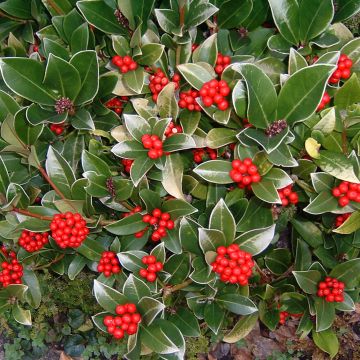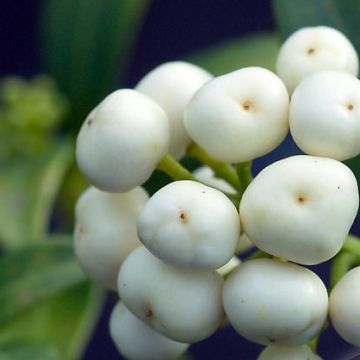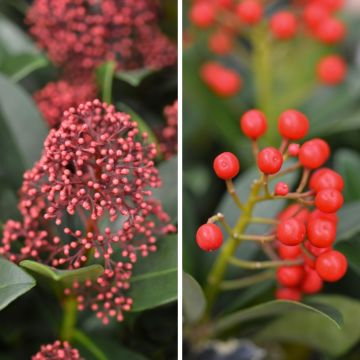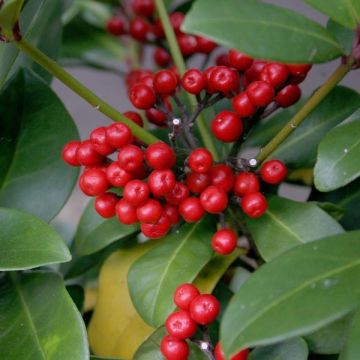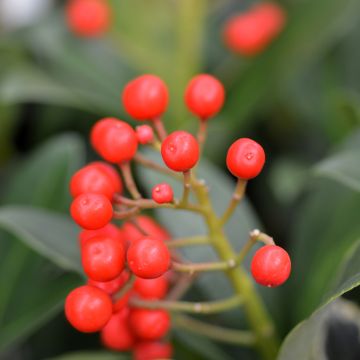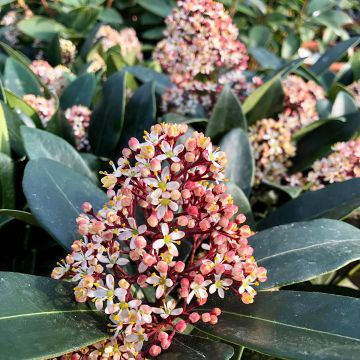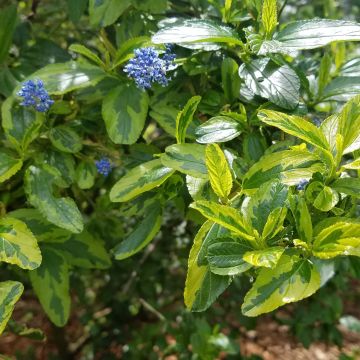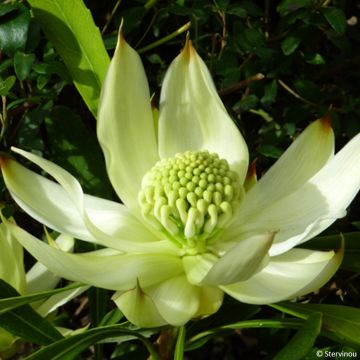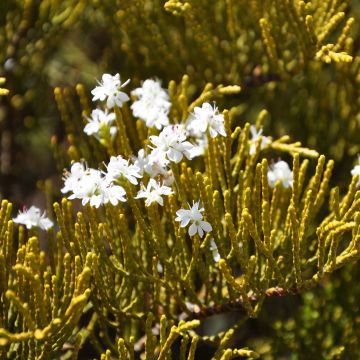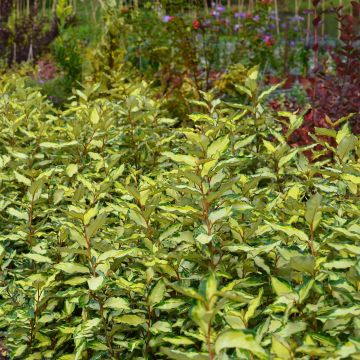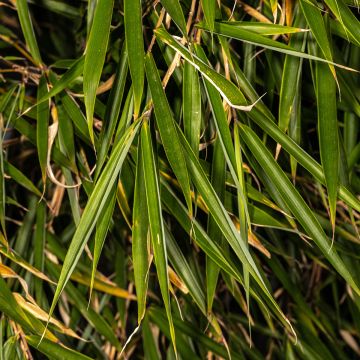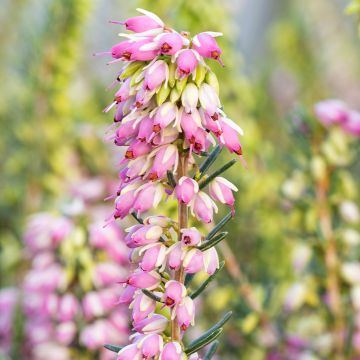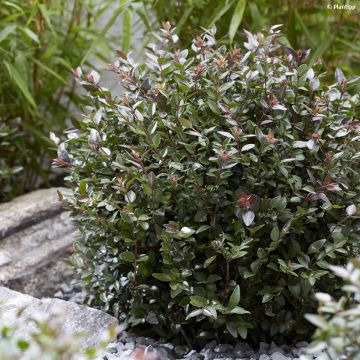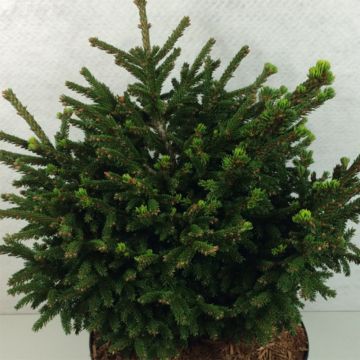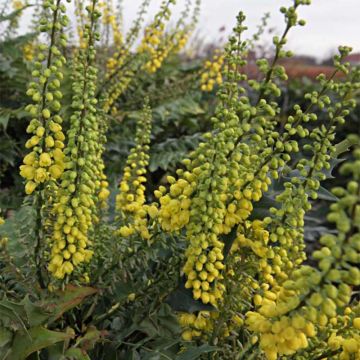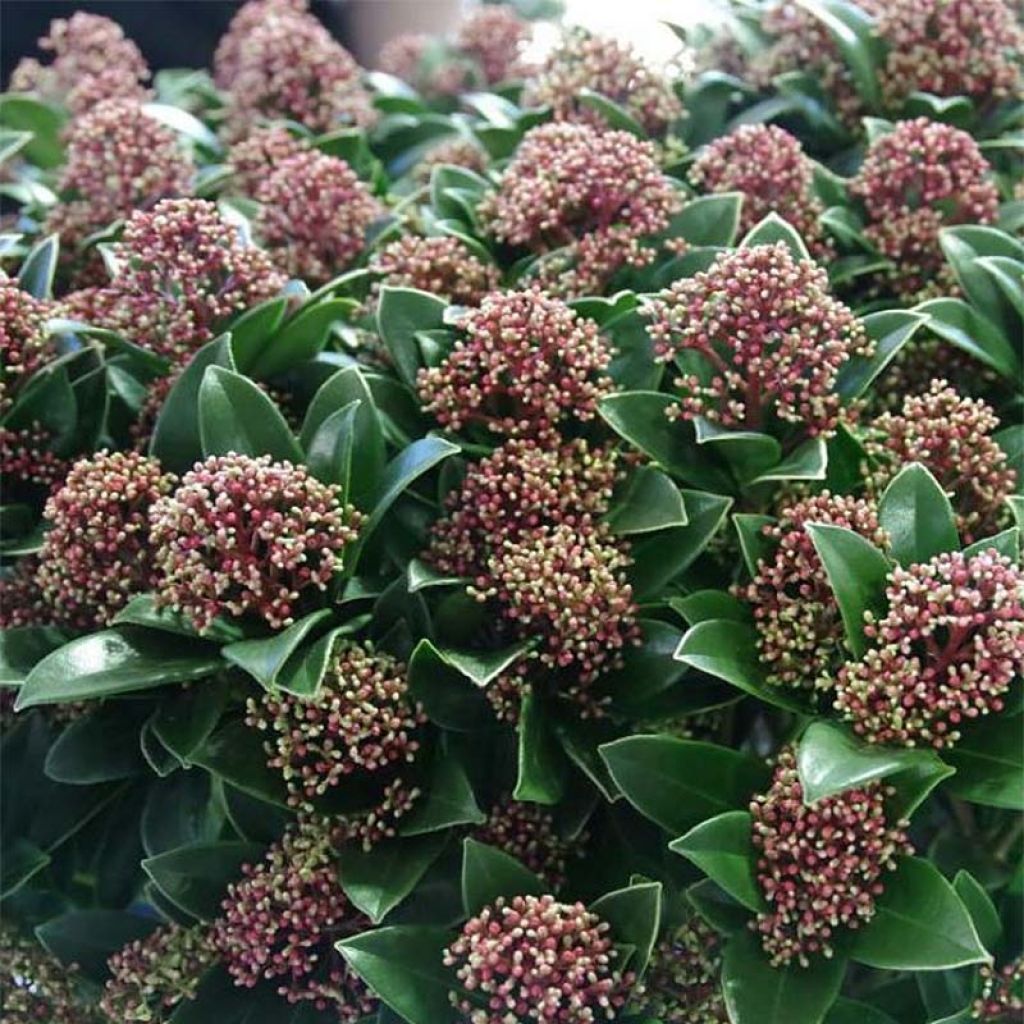

Skimmia japonica Moerings 47 Pink Dwarf
Skimmia japonica Moerings 47 Pink Dwarf
Skimmia japonica Moerings 47 Pink Dwarf
Japanese Skimmia
This plant carries a 24 months recovery warranty
More information
We guarantee the quality of our plants for a full growing cycle, and will replace at our expense any plant that fails to recover under normal climatic and planting conditions.
From €5.90 for pickup delivery and €6.90 for home delivery
Express home delivery from €8.90.
Does this plant fit my garden?
Set up your Plantfit profile →
Description
The Skimmia japonica Pink Dwarf has been selected for its very limited growth as well as its abundant pastel pink, subtly scented blooms. Decorative for a good part of the year, it adorns itself with pretty pink buds in autumn, forms a lovely ball of leaves in winter and flowers quite early in spring. It is easily cultivated in shade or semi-shade, in cool and light soil devoid of limestone, like dwarf rhododendrons, hostas and Japanese azaleas with which it forms beautiful displays. Ornamental, melliferous and nourishing, the Skimmia attracts pollinating insects and a whole little auxiliary gardener's fauna. Ideal in a pot on the terrace or balcony and in a small Japanese-style garden!
Belonging to the family of the rutaceae like citrus trees, the Skimmia japonica is originally an Asian plant found in Southeast Asia. The 'Pink Dwarf' is a horticultural variety with a bushy, very compact, nicely rounded habit, as wide as it is high, and quite a slow its growth. At maturity, the bush will reach about 50-60 cm. Its well-developed root system compared to its vegetation allows it to better tolerate soil that occasionally dries out. The floral buds of a candy pink colour form on the branches in the autumn and persist throughout the winter. The flowering itself, in April-May, is in the form of panicles of 3 to 6 cm (1.2 to 2.4 in) long. They are made up of a multitude of tiny star-shaped flowers of a very pale pink colour, measuring a few millimetres. Their scent, which can evoke vanilla, can be enjoyed from several metres away. The evergreen foliage is formed of 5 to 10 cm (2 to 3.9 in) long, ovate, and pointed leaves. They are alternately arranged on the branches. It is a thick foliage that is slightly aromatic when crushed, but not edible. This bush is also very hardy, down to a minimum of -15°C (5 °F).
In cool and humid climates, the Japanese skimmia has its place among undergrowth, along a north-facing wall, in a shrub bed, or in a small shaded hedge. It not dislikes limestone and/or dry soil, is averse to heat, but can tolerate fairly difficult conditions to grow, under bamboos or large trees for example. It is happy in shade or semi-shade, in the company of ferns, Rhododendrons, Heathers and Japanese azaleas. Plant Cyclamen, Bergenia, violets, and Eranthis at its feet, for example.
Report an error about the product description
Skimmia japonica Moerings 47 Pink Dwarf in pictures
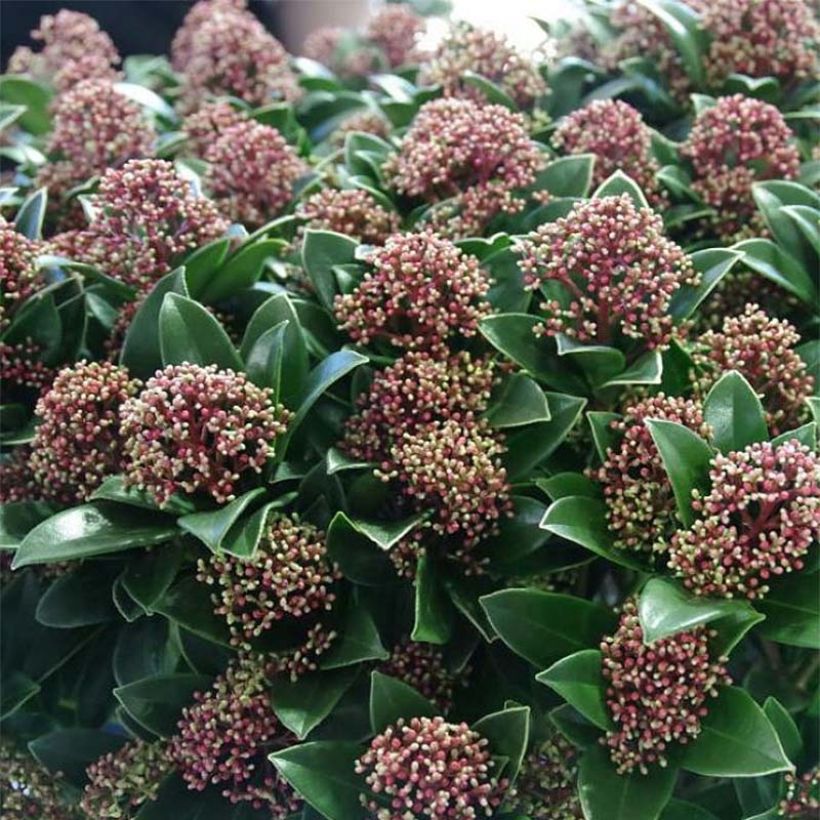

Plant habit
Flowering
Foliage
Botanical data
Skimmia
japonica
Moerings 47 Pink Dwarf
Rutaceae
Japanese Skimmia
Cultivar or hybrid
Other Skimmia
Planting and care
Plant the Skimmia japonica 'Pink Dwarf' in partial shade or shade in a humus-rich, cool, but well-drained and preferably acidic soil. Peat mixed with leaf compost will suits it well. Avoid scorching sun and alkaline, lime-rich, poor, dry soil as well as heavy soil that risk causing chlorosis and brown spots. Shelter your Skimmia from strong winds and cold draughts. Remember to water it, as it hates drought. This bush can be attacked by scaly insects.
Planting period
Intended location
Care
This item has not been reviewed yet - be the first to leave a review about it.
Evergreen shrubs
Haven't found what you were looking for?
Hardiness is the lowest winter temperature a plant can endure without suffering serious damage or even dying. However, hardiness is affected by location (a sheltered area, such as a patio), protection (winter cover) and soil type (hardiness is improved by well-drained soil).

Photo Sharing Terms & Conditions
In order to encourage gardeners to interact and share their experiences, Promesse de fleurs offers various media enabling content to be uploaded onto its Site - in particular via the ‘Photo sharing’ module.
The User agrees to refrain from:
- Posting any content that is illegal, prejudicial, insulting, racist, inciteful to hatred, revisionist, contrary to public decency, that infringes on privacy or on the privacy rights of third parties, in particular the publicity rights of persons and goods, intellectual property rights, or the right to privacy.
- Submitting content on behalf of a third party;
- Impersonate the identity of a third party and/or publish any personal information about a third party;
In general, the User undertakes to refrain from any unethical behaviour.
All Content (in particular text, comments, files, images, photos, videos, creative works, etc.), which may be subject to property or intellectual property rights, image or other private rights, shall remain the property of the User, subject to the limited rights granted by the terms of the licence granted by Promesse de fleurs as stated below. Users are at liberty to publish or not to publish such Content on the Site, notably via the ‘Photo Sharing’ facility, and accept that this Content shall be made public and freely accessible, notably on the Internet.
Users further acknowledge, undertake to have ,and guarantee that they hold all necessary rights and permissions to publish such material on the Site, in particular with regard to the legislation in force pertaining to any privacy, property, intellectual property, image, or contractual rights, or rights of any other nature. By publishing such Content on the Site, Users acknowledge accepting full liability as publishers of the Content within the meaning of the law, and grant Promesse de fleurs, free of charge, an inclusive, worldwide licence for the said Content for the entire duration of its publication, including all reproduction, representation, up/downloading, displaying, performing, transmission, and storage rights.
Users also grant permission for their name to be linked to the Content and accept that this link may not always be made available.
By engaging in posting material, Users consent to their Content becoming automatically accessible on the Internet, in particular on other sites and/or blogs and/or web pages of the Promesse de fleurs site, including in particular social pages and the Promesse de fleurs catalogue.
Users may secure the removal of entrusted content free of charge by issuing a simple request via our contact form.
The flowering period indicated on our website applies to countries and regions located in USDA zone 8 (France, the United Kingdom, Ireland, the Netherlands, etc.)
It will vary according to where you live:
- In zones 9 to 10 (Italy, Spain, Greece, etc.), flowering will occur about 2 to 4 weeks earlier.
- In zones 6 to 7 (Germany, Poland, Slovenia, and lower mountainous regions), flowering will be delayed by 2 to 3 weeks.
- In zone 5 (Central Europe, Scandinavia), blooming will be delayed by 3 to 5 weeks.
In temperate climates, pruning of spring-flowering shrubs (forsythia, spireas, etc.) should be done just after flowering.
Pruning of summer-flowering shrubs (Indian Lilac, Perovskia, etc.) can be done in winter or spring.
In cold regions as well as with frost-sensitive plants, avoid pruning too early when severe frosts may still occur.
The planting period indicated on our website applies to countries and regions located in USDA zone 8 (France, United Kingdom, Ireland, Netherlands).
It will vary according to where you live:
- In Mediterranean zones (Marseille, Madrid, Milan, etc.), autumn and winter are the best planting periods.
- In continental zones (Strasbourg, Munich, Vienna, etc.), delay planting by 2 to 3 weeks in spring and bring it forward by 2 to 4 weeks in autumn.
- In mountainous regions (the Alps, Pyrenees, Carpathians, etc.), it is best to plant in late spring (May-June) or late summer (August-September).
The harvesting period indicated on our website applies to countries and regions in USDA zone 8 (France, England, Ireland, the Netherlands).
In colder areas (Scandinavia, Poland, Austria...) fruit and vegetable harvests are likely to be delayed by 3-4 weeks.
In warmer areas (Italy, Spain, Greece, etc.), harvesting will probably take place earlier, depending on weather conditions.
The sowing periods indicated on our website apply to countries and regions within USDA Zone 8 (France, UK, Ireland, Netherlands).
In colder areas (Scandinavia, Poland, Austria...), delay any outdoor sowing by 3-4 weeks, or sow under glass.
In warmer climes (Italy, Spain, Greece, etc.), bring outdoor sowing forward by a few weeks.

































